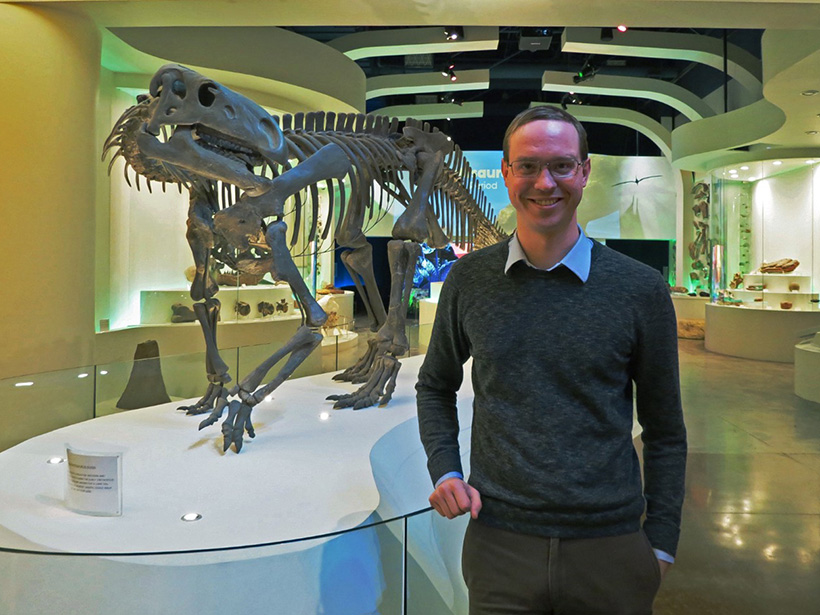Morgan Rehnberg described his decision to pursue a job outside the traditional academic career track like choosing to step off a cliff. “You’ve got to be really sure that there’s going to be something out there to catch you,” he said. With the fast pace of academic research and the fact that many early-career fellowships disappear a few years after a researcher gets a Ph.D., he feared that “there’s no going back 5 years down the road and saying, ‘Oops, actually I think I’d like to go back to being a postdoc or something.’”
In some ways, Rehnberg’s decision was not about whether to take that leap, but which cliff to leap from. He was on track to finish his Ph.D. studying Saturn’s rings at the University of Colorado (CU) Boulder in May 2017, just 4 months before NASA’s Cassini mission would take its fatal plunge into Saturn’s atmosphere. He knew that the in situ data he needed for his research would soon dry up without an active satellite mission. “It wasn’t just that I was going to have to change missions. I was going to have to find a new [sub]field,” he said. “Balanced with that, the leap to try something outside of academia didn’t seem like that much more of a risk.”

Rehnberg used the relative security that graduate school afforded him to explore his career options. He started an astronomy blog and earned paid science writing gigs; he volunteered at CU Boulder’s planetarium, gave science talks to the public, and helped start a space news podcast. He soon found himself enjoying his outreach work just as much as his academic research. “The promise of getting to do more of that was worth taking what felt to me like a pretty big career risk at the time,” he said.
After graduate school, Rehnberg landed in his current role as chief scientist at the Fort Worth Museum of Science and History in Texas, where he’s been for the past 4 years. Whether it’s astronomy, climate change, paleontology, or the ways in which science influences our lives, his job is all about showcasing science to thousands of museum visitors. Part of his job is designing new exhibits, like the museum’s tribute to Apollo 12 astronaut and Fort Worth native Alan Bean for the fiftieth anniversary of the Moon landing in 2019. The exhibit incorporated interactive technologies and historical artifacts from Bean’s training and spaceflight to connect Fort Worth residents with their piece of moonshot history. With that exhibit and more since, “I’m proud of how much work we’ve done to expand the reach of the ways in which the people can interact with science,” he said.
In grad school, “if I had known that this was the thing I was going to stumble into, I would have run off the cliff looking for it.”
Rehnberg (@MorganRehnberg on Twitter) encourages audiences to visit the Fort Worth Museum of Science and History (@fwmsh).
This profile is part of a special series in our September 2021 issue on science careers.
—Kimberly M. S. Cartier (@AstroKimCartier), Staff Writer
Citation:
Cartier, K. M. S. (2021), Morgan Rehnberg: The making of a museum chief, Eos, 102, https://doi.org/10.1029/2021EO161980. Published on 24 August 2021.
Text © 2021. AGU. CC BY-NC-ND 3.0
Except where otherwise noted, images are subject to copyright. Any reuse without express permission from the copyright owner is prohibited.


